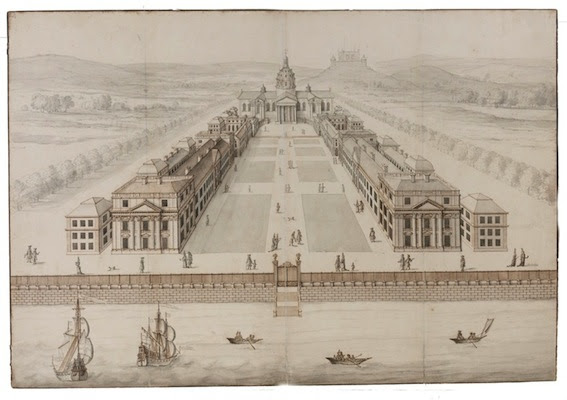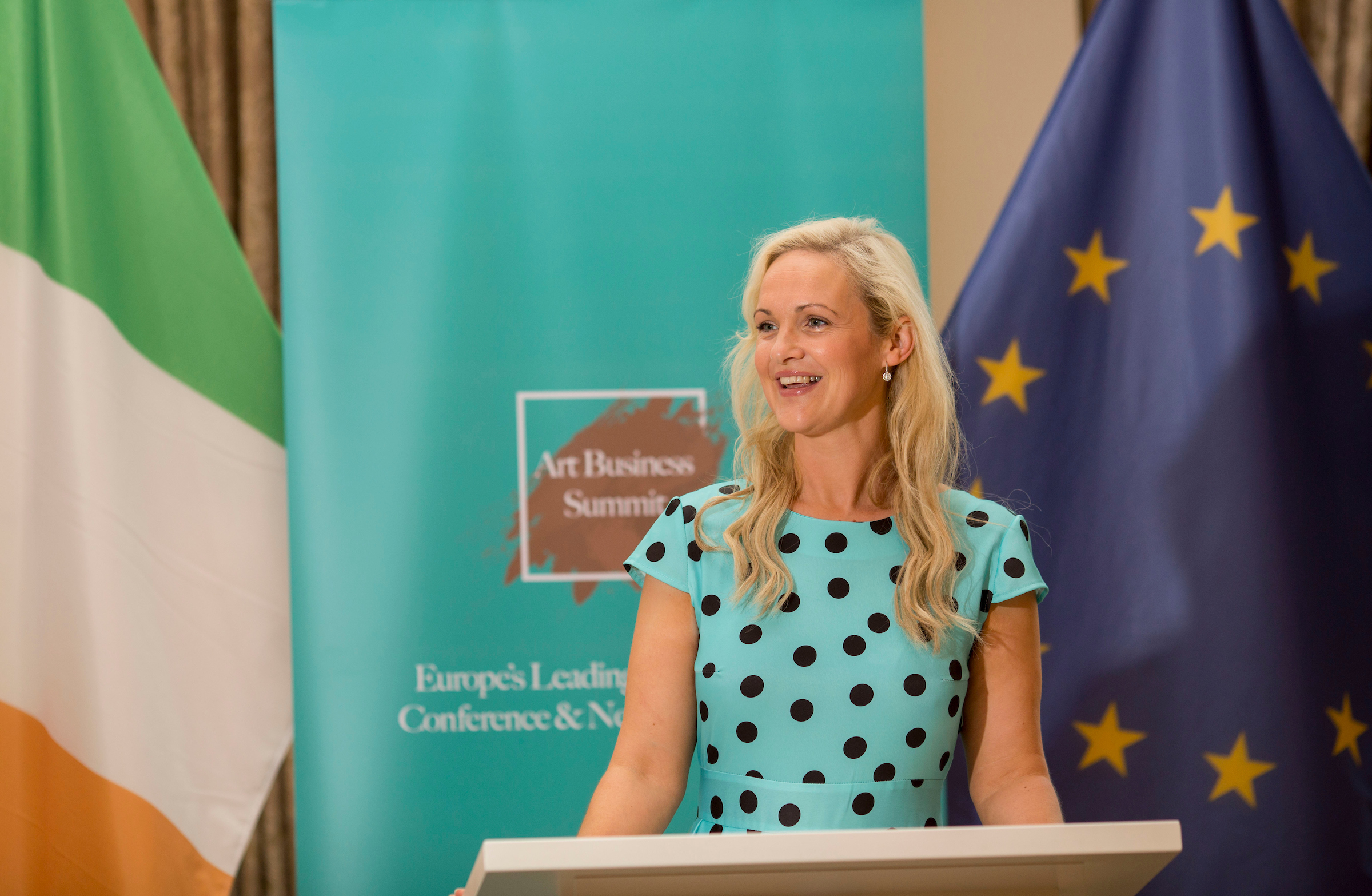Sir John Soane’s Museum
Exhibition runs 17th February – 9th May 2015
Joseph Michael Gandy, Perspective of Arch between two buildings adjoining Downing Street, 1827. Pencil, pen and ink, and watercolour, 720 x 1300 mm
Sir John Soane’s Museum presents Building a Dialogue: The Architect and the Client, an exhibition exploring the delicate, complex and sometimes difficult relationship between clients and architects, charting the development of the architectural profession from Elizabethan to Victorian times.
Analysing exemplary projects by Sir John Soane, and the work of and influence on the profession by some of the most illustrious British architectural pioneers – Sir Christopher Wren (1622 – 1723), William Chambers (1723 –96), Robert Adam (1728 –92) and his brother James Adam (1732 – 94) – Building a Dialogue will look at the intrinsic dynamics of architectural commissions, in an unprecedented display of rare pieces from the Museum collection.
The commissioning process for Soane’s buildings, including Dulwich Picture Gallery and Holy Trinity Church, and Wren’s Royal Naval Hospital will be presented through a unique body of work, which includes never before seen drawings, private and public documents, letters, correspondence, and models, in one of the most comprehensive surveys of the architecture profession ever displayed at Sir John Soane’s Museum.
A key area of interest is the client’s role within the process; client typologies will be examined through a series of historical case studies, focusing on different types of commissions: the private client; the public client; the State as a client; and, unusually, a posthumous client commission.
One of the exhibition’s highlights, a recently discovered drawing of the façade of the Museum, will be displayed for the first time. Conservators found the drawing in 2014, hidden behind a painting within a frame in the Museum. Soane produced very few drawings of his home at Lincoln’s Inn Fields, as typically these were part of the presentation process to the client; this newly discovered drawing is thus a rare and precious depiction of the architect’s own vision for the building.
Sir John Soane’s work at Dulwich Picture Gallery forms one of the exhibition case studies. The project and its construction presents a unique client-architect relationship, as Soane designed the gallery to the posthumous specifications of his friend Sir Francis Bourgeois. Bourgois stipulated in his will (following his death in 1811) that Soane be given the commission to design and execute the Picture Gallery.
Leonard Knyff, Perspective presentation drawing of a design for an enlarged hospital with a central domed hall and chapel range, datable to 1695. Pen and ink, 475 x 696 mm
Problematic client relationships will also be explored through projects such as Soane’s Holy Trinity Church, Marylebone and Wren’s Royal Naval Hospital. Both these state-sponsored projects were characterised by radical changes to the architect’s initial vision brought about by the strong opinions of the patrons. In particular Wren’s initial concept of the Royal Naval Hospital envisaged demolishing Inigo Jones’ Queen’s House, something vetoed in the strongest manner possible by the King. Wren’s initial vision will be illustrated by drawings by Hawskmoor and Knyff, which have previously not been shown to the public.
In the instance of Soane’s initial designs for Holy Trinity Church, one of three churches Soane undertook as part of a broader campaign of church building instigated by the Church Commissioners to celebrate the defeat of Napoleon in 1815, Soane’s classical vision was vetoed by both the parish and the Commissioners on grounds of cost and of style. Soane was forced to produce Norman and Gothic alternatives, both styles with which he was uncomfortable. On display will be Gandy’s drawing showing the perspectives of eight designs for churches, including the various designs for Holy Trinity.
Early forms of ‘marketing’ will shape an important section of the display. In the early modern period architects transmitted ideas to prospective clients and to other architects through ‘pattern books’. The Thorpe Album is an exceptionally rare and important example of a late Elizabethan/early Jacobean architectural manuscript, which is central to our understanding of British architecture and how architectural ideas are transmitted in this early period.
John Thorpe, ‘IT’ House from the Thorpe Album, c.1580. Pen and ink, 431 x 280 mm
By the 18th century however, recognisably modern ways of ‘marketing’ architectural projects and practices can be seen. The Adam brothers were pioneers in this field. They deployed cheap popular prints such as that of the Admiralty Screen in Whitehall to reach a broad audience of the general public, but also produced ‘deluxe’ publications outlining their approach to design and architecture. The Works in Architecture of Robert and James Adam, published in 1778 by the Adam office, was intended to appeal to both prospective patrons and also to the architectural profession per se. The idea of persuading the general public as well as patrons is something that contemporary architects utilise as a strategy.
Another channel of communication with the public and with potential clients was given by the Royal Academy Annual Exhibition where architectural drawings were shown alongside paintings and watercolours. In order to make his architectural drawings stand out amongst the displays, Sir William Chambers highlighted them with distinctive blue borders. However, his drawings were still small in scale in comparison to the oil paintings and watercolours included in the Exhibition. Soane radically changed the way in which architecture was represented in the Annual Exhibition by utilising scale and heightened atmospheric effects in his office drawings. Utilising the visionary talent of his draughtsman Joseph Michael Gandy, Soane presented architectural projects such as his unexecuted plans for rebuilding Downing Street and Whitehall in an extremely theatrical, dramatic manner, ensuring that his architectural drawings would have as much impact as the oil paintings and watercolours displayed alongside them.
Abraham Thomas, Director of Sir John Soane’s Museum says:
“Architectural drawings have a profound ability to record and articulate the various design discussions that occur within an office or between an architect and a client. I’m delighted that this exhibition not only draws upon gems from the Museum’s collection of over 30,000 architectural drawings, but also reminds us that Sir John Soane’s home was the site of a busy architectural practice, embedded in the heart of the building, where such conversations happened every day. The exhibition also makes a connection between historical and contemporary contexts, by exploring the multi-faceted ways in which architects, especially Soane himself, have always engaged with, and re-defined, the notion of a ‘client’ – showing us how design ideas have continued to express themselves through the drawing process, from Soane’s time through to the present day.”
Building a Dialogue: The Architect and the Client will be on display at Sir John Soane’s Museum from 17th February to 9th May 2015






 Saving...
Saving...